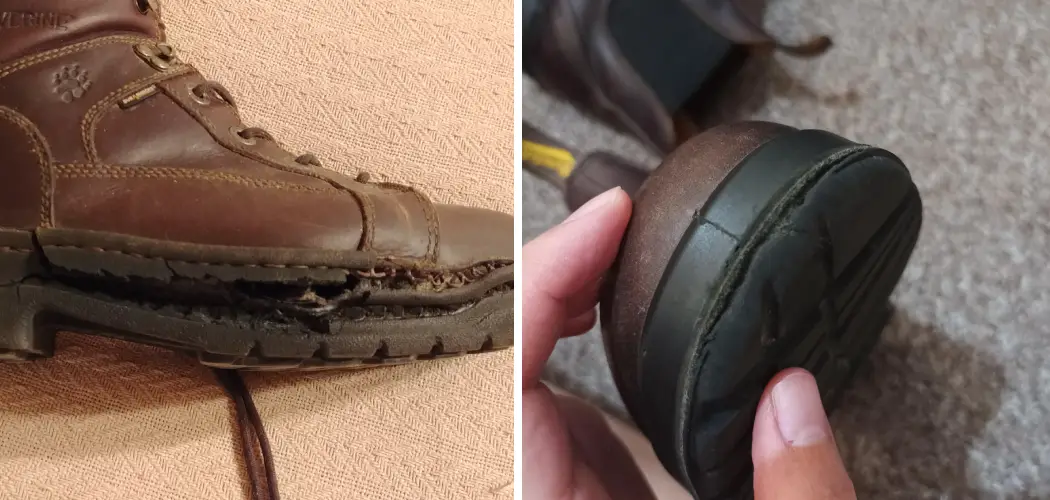Hydrolysis is a process where water breaks down the chemical bonds in a material, causing it to deteriorate and weaken. In leather boots, this can result in the breakdown of collagen fibers, resulting in cracks and tears. Not only does this affect the appearance of your boots, but it also decreases their durability and lifespan.
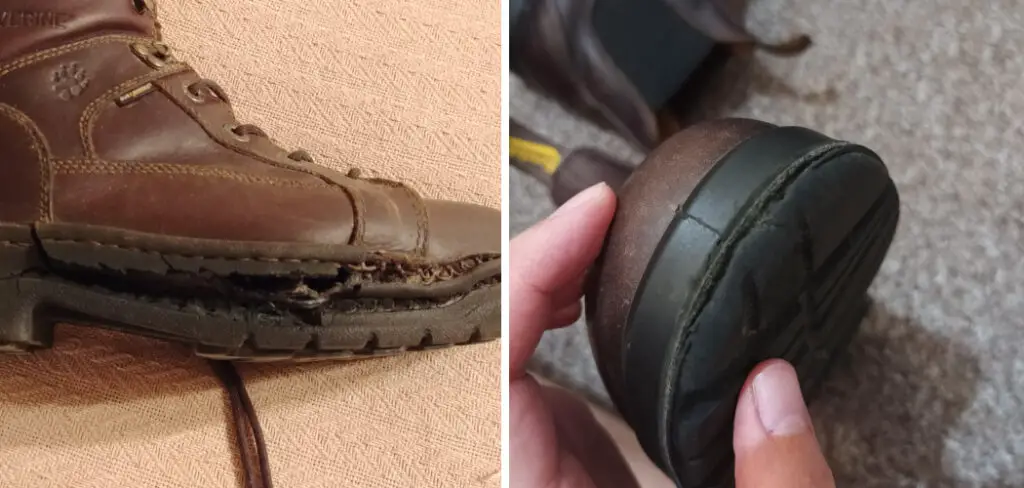
The main advantage of stopping hydrolysis in leather boots is that it can prolong the lifespan of your boots. Hydrolysis, also known as leather rot, is a common problem faced by many leather boot owners. It occurs when the leather material begins to break down due to exposure to water or humidity. Read this blog post to learn how to stop hydrolysis in leather boots.
Step by Step Processes for How to Stop Hydrolysis in Leather Boots
Step 1: Inspect Your Leather Boots
The first step in stopping hydrolysis is to carefully inspect your leather boots for any signs of damage. This includes cracks, wrinkles, or discoloration that may indicate the onset of hydrolysis. Use a gentle leather cleaner to remove any dirt or debris from your boots. This will prevent further damage and allow you to see the true condition of your boots.
Step 2: Dry Your Boots Thoroughly
After cleaning, make sure to thoroughly dry your boots. Use a clean cloth to remove excess moisture and let them air dry in a well-ventilated area. Once your boots are completely dry, apply a good quality leather conditioner to restore the natural oils in the leather and prevent it from becoming brittle.
Step 3: Use a Waterproofing Spray
To protect your boots from water and humidity, apply a waterproofing spray specifically designed for leather materials. While some exposure to water is inevitable, try to avoid wearing your leather boots in heavy rain or submerging them in water for long periods of time.
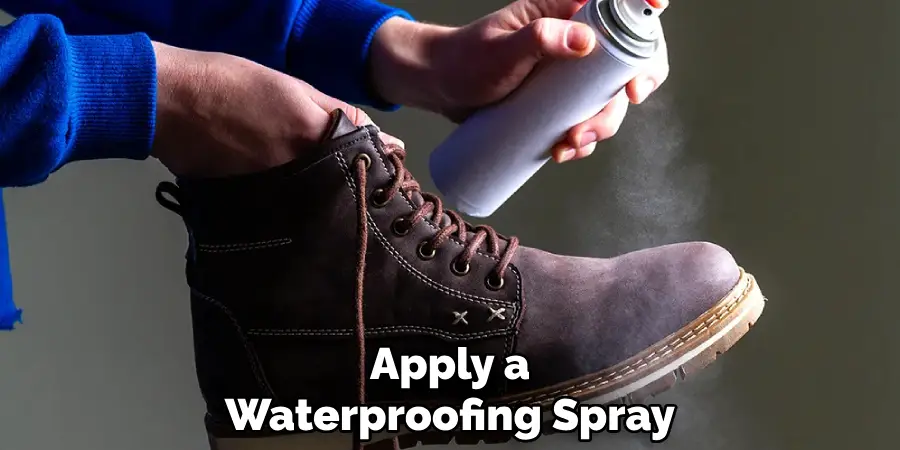
Step 4: Store Your Boots Properly
When not in use, store your leather boots in a cool, dry place. Avoid storing them in plastic bags or boxes as this can trap moisture and promote hydrolysis. To absorb any excess moisture, place silica gel packs inside your boots when storing them. This will help prevent hydrolysis from occurring.
Step 5: Monitor Your Boots Regularly
Keep an eye on your boots and regularly inspect them for any signs of damage or deterioration. The earlier you catch hydrolysis, the easier it is to stop. If you notice severe damage or cannot stop the progression of hydrolysis on your own, seek help from a professional leather care specialist.
Tips for How to Stop Hydrolysis in Leather Boots
- Keep your leather boots dry. – Water is the main culprit in causing hydrolysis in leather materials. To prevent this, avoid submerging your leather boots in water or wearing them when it’s raining outside. If your boots do get wet, make sure to dry them properly before storing them away.
- Apply waterproofing products. – Waterproofing sprays can help to create a barrier against water and other liquids. Make sure to choose a product that is specifically made for leather materials.
- Use a conditioner. – Leather can become dry and brittle over time, making it more susceptible to hydrolysis. To keep your boots supple and hydrated, use a leather conditioner regularly.
- Avoid extreme temperatures. – Extreme heat or cold can cause damage to leather materials, including hydrolysis. When not wearing your boots, store them in a cool and dry place.
- Clean your boots regularly. – Dirt and grime can cause the leather to break down over time. Make sure to clean your boots regularly using gentle cleaning products made specifically for leather.
- Don’t use harsh chemicals. – Harsh chemicals, such as bleach or ammonia, can cause hydrolysis in leather materials. Avoid using these products on or near your leather boots.
- Rotate your footwear. – Wearing the same pair of leather boots every day can cause them to wear out faster and increase the risk of hydrolysis. Give your boots a break and rotate them with other pairs of shoes to prolong their lifespan.
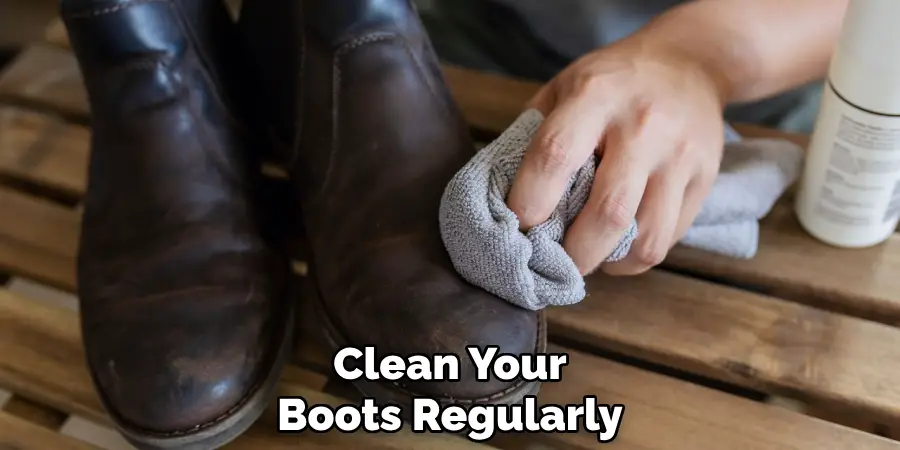
How Can You Prevent Hydrolysis From Happening to Your Leather Boots?
Hydrolysis is a chemical process that occurs when leather comes in contact with water or moisture for prolonged periods. This leads to the breakdown of the protein structure in the leather, causing it to become brittle and discolored. As a result, your once beautiful boots can transform into an unrecognizable, cracked mess. Preventing Hydrolysis:
The good news is, there are several simple steps you can take to prevent hydrolysis from happening to your leather boots.
1. Proper Storage
The key to preventing hydrolysis is keeping your leather boots dry at all times. Avoid storing them in damp or humid areas such as basements or bathrooms, and instead keep them in a cool, dry place.
2. Use a Waterproofing Spray
Invest in a good quality waterproofing spray and apply it to your boots before wearing them. This will create a protective barrier that repels water and prevents moisture from seeping into the leather.
3. Dry Your Boots Properly
If your boots do get wet, never place them directly in front of a heat source to dry. This will only speed up the hydrolysis process. Instead, stuff them with newspaper to absorb excess moisture and let them air dry naturally.
4. Condition Your Boots
Leather is a natural material that needs to be nourished and conditioned regularly to maintain its quality. Use a leather conditioner or oil at least once a month to keep your boots hydrated and prevent them from drying out.
5. Rotate Your Footwear
Wearing the same pair of leather boots every day can lead to excessive moisture buildup, increasing the chances of hydrolysis. Rotating your footwear will give each pair time to fully dry out before being worn again.
By following these simple tips, you can prevent hydrolysis from happening to your beloved leather boots. With proper care and maintenance, you can extend the lifespan of your boots and continue to enjoy their timeless style for years to come.
Are There Any DIY Methods to Repair the Damage Caused by Hydrolysis in Leather Boots?
While prevention is always the best approach, there are some DIY methods to repair minor damage caused by hydrolysis. These include using a leather conditioner or oil to rehydrate the leather and using a shoe polish or dye to cover any discoloration.
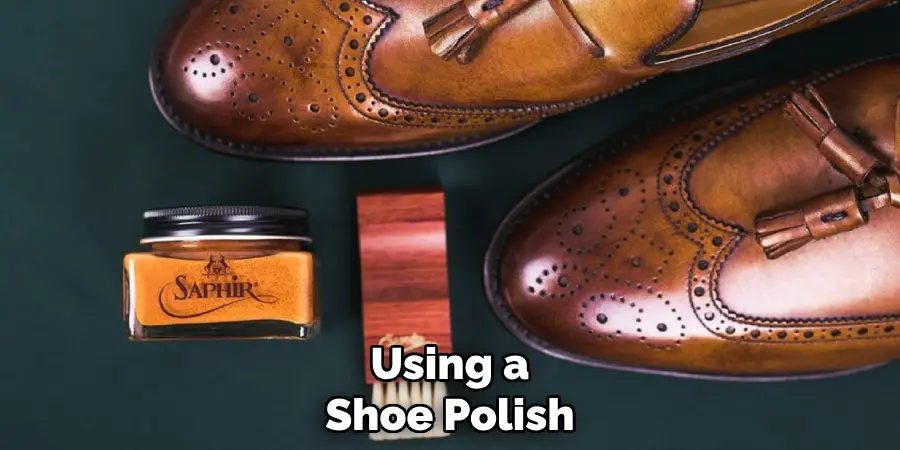
However, it’s important to note that these methods may not be effective for more severe cases of hydrolysis. In these instances, it’s best to seek professional help from a leather specialist or cobbler. Additionally, regular maintenance and proper care can help prevent further damage and prolong the life of your leather boots.
How Can You Properly Store Your Leather Boots to Avoid Hydrolysis?
Leather boots are a popular footwear choice for many people due to their durability and timeless style. However, one of the biggest challenges of owning leather boots is preventing hydrolysis. Hydrolysis is a chemical process where water breaks down the leather fibers, causing them to weaken and eventually deteriorate. The good news is that there are simple steps you can take to prevent hydrolysis in your leather boots. Here are some best practices for storing leather boots:
1. Keep Them Clean and Dry
Before storing your leather boots, make sure they are clean and dry. Any dirt or debris on the surface of the boots can trap moisture, leading to hydrolysis. Use a soft cloth or brush to remove any dirt, dust, or stains from your boots.
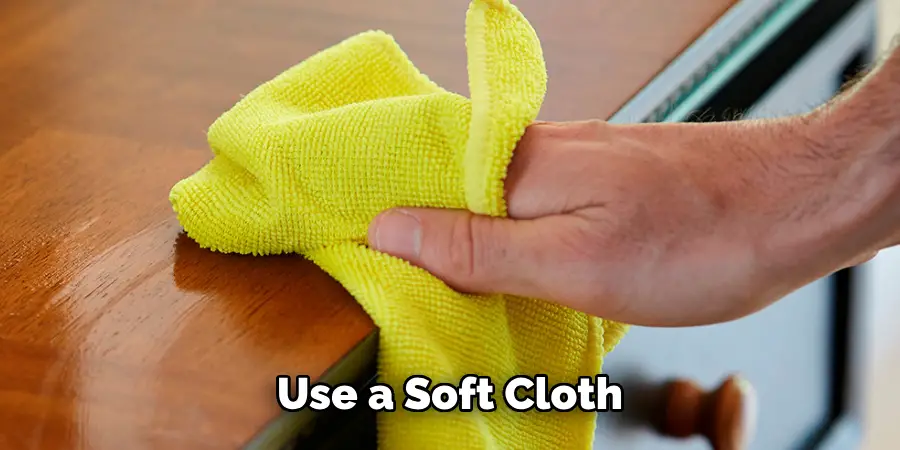
If your boots are wet, stuff them with newspaper or paper towels to absorb excess moisture. Let them air-dry away from direct heat sources such as radiators or fireplaces. Once they are completely dry, apply a leather conditioner to keep the material supple and prevent cracking.
2. Store Them in a Cool, Dry Place
Leather boots should be stored in an area with low humidity and temperature. High heat and moisture levels can speed up the hydrolysis process and cause irreparable damage to your boots. Avoid storing them in damp basements, attics, or closets without proper ventilation.
It’s also important to protect your boots from direct sunlight. UV rays can cause the leather to fade and dry out, making it more susceptible to hydrolysis. If possible, store your boots in a dark place such as a closet or shoe cabinet.
3. Use Boot Trees
Boot trees are essential for maintaining the shape and structure of your leather boots. They also help absorb excess moisture and prevent creasing, which can lead to hydrolysis. Choose boot trees made from cedar wood, as they have antibacterial properties that help keep your boots fresh.
Insert the boot trees into your boots after cleaning and conditioning them. This will help them maintain their shape while in storage and prevent any unwanted creases.
4. Avoid Plastic Bags or Containers
It may be tempting to keep your leather boots in plastic bags or containers for protection, but this can actually do more harm than good. Leather needs to breathe, and storing it in an airtight container can trap moisture, leading to hydrolysis.
Instead, use cotton or muslin shoe bags to store your boots. These materials allow air to circulate, preventing moisture buildup and prolonging the life of your boots.
5. Rotate Your Boots
Lastly, try not to wear the same pair of leather boots every day. Giving them a break in between uses allows any excess moisture from sweat or rain to evaporate and prevents hydrolysis from occurring. It’s also a good idea to rotate between different pairs of boots to give them all a chance to breathe and air out.
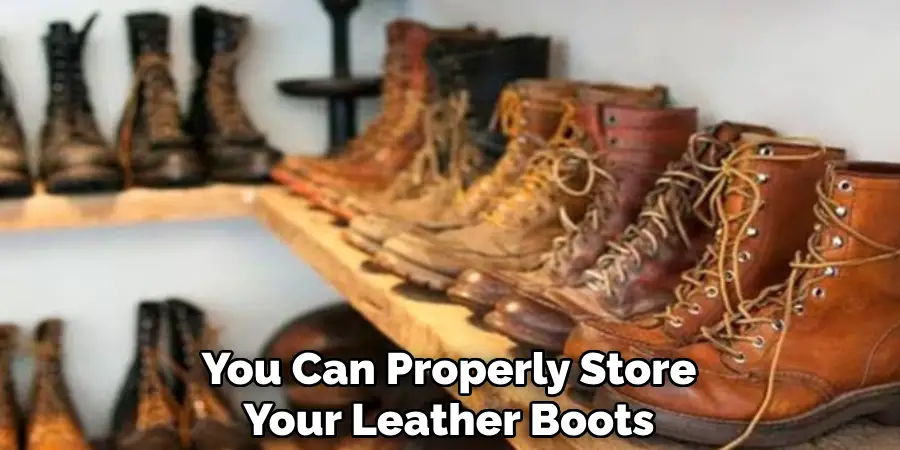
By following these simple steps, you can properly store your leather boots and avoid the risk of hydrolysis. With proper care, your boots will last for many years and continue to be a stylish addition to your wardrobe. Remember, prevention is key when it comes to stopping hydrolysis in your leather boots.
Conclusion
In conclusion, we have discussed the various factors that contribute to hydrolysis in leather boots and how it can deteriorate the quality and lifespan of your favorite pair. We have also explored effective ways to prevent this process from occurring, ensuring that your leather boots remain in top condition for a longer period.
Firstly, it is important to understand that moisture is the main culprit behind hydrolysis in leather boots. Therefore, to stop this process, it is crucial to keep your boots clean and dry at all times.
This can be achieved by regularly wiping off any excess moisture and avoiding prolonged exposure to water. I hope this article has been beneficial for learning how to stop hydrolysis in leather boots. Make Sure the precautionary measures are followed chronologically.

